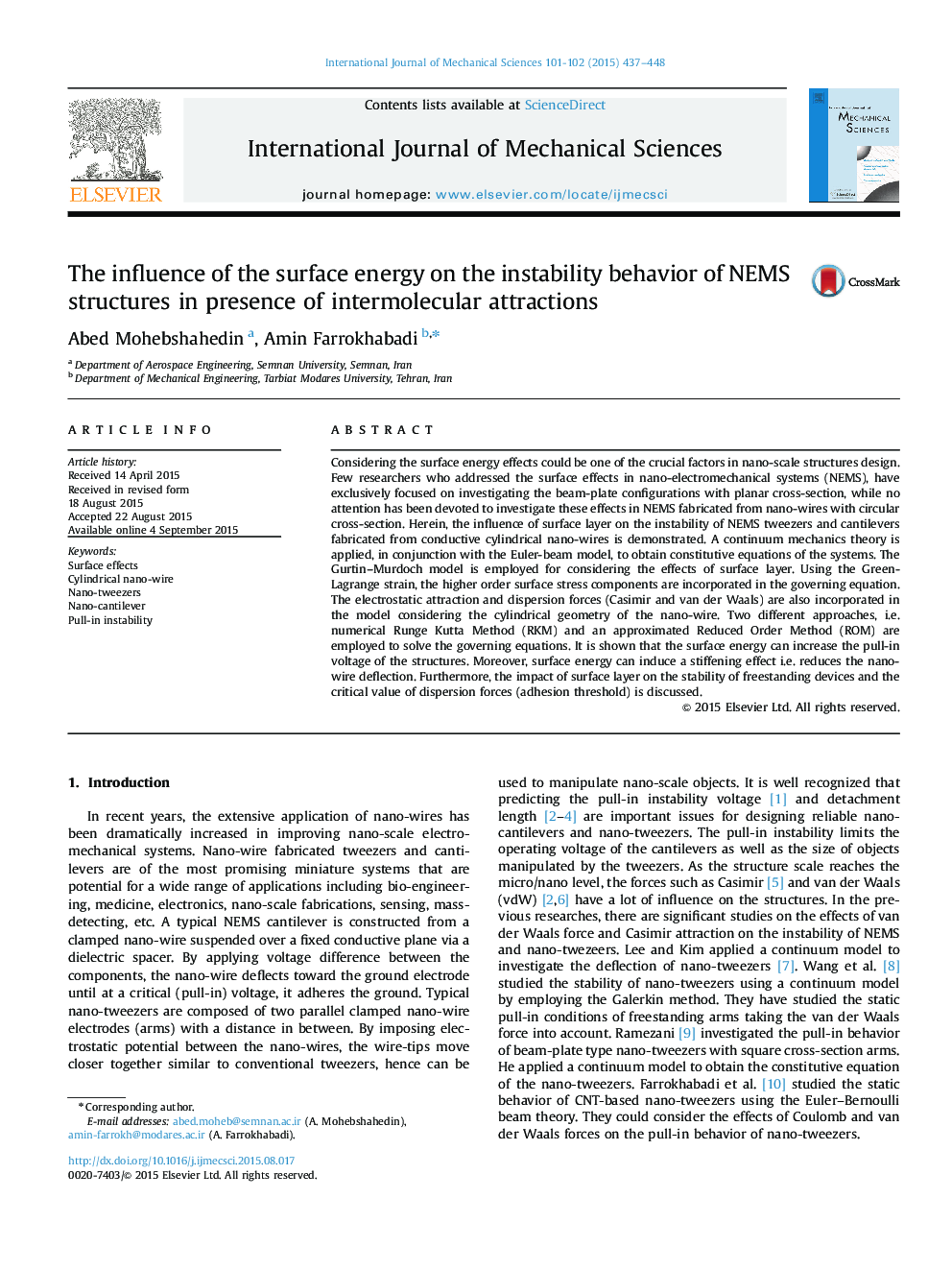| Article ID | Journal | Published Year | Pages | File Type |
|---|---|---|---|---|
| 783349 | International Journal of Mechanical Sciences | 2015 | 12 Pages |
•Considering the influence of surface effects on the instability of NEMS tweezers and cantilevers using the Green-Lagrange strain.•Applying a continuum mechanics theory in conjunction with the Euler-beam model for obtaining the constitutive equations.•Incorporating the electrostatic attraction and dispersion forces (Casimir and van der Waals) in the model response.
Considering the surface energy effects could be one of the crucial factors in nano-scale structures design. Few researchers who addressed the surface effects in nano-electromechanical systems (NEMS), have exclusively focused on investigating the beam-plate configurations with planar cross-section, while no attention has been devoted to investigate these effects in NEMS fabricated from nano-wires with circular cross-section. Herein, the influence of surface layer on the instability of NEMS tweezers and cantilevers fabricated from conductive cylindrical nano-wires is demonstrated. A continuum mechanics theory is applied, in conjunction with the Euler-beam model, to obtain constitutive equations of the systems. The Gurtin–Murdoch model is employed for considering the effects of surface layer. Using the Green-Lagrange strain, the higher order surface stress components are incorporated in the governing equation. The electrostatic attraction and dispersion forces (Casimir and van der Waals) are also incorporated in the model considering the cylindrical geometry of the nano-wire. Two different approaches, i.e. numerical Runge Kutta Method (RKM) and an approximated Reduced Order Method (ROM) are employed to solve the governing equations. It is shown that the surface energy can increase the pull-in voltage of the structures. Moreover, surface energy can induce a stiffening effect i.e. reduces the nano-wire deflection. Furthermore, the impact of surface layer on the stability of freestanding devices and the critical value of dispersion forces (adhesion threshold) is discussed.
